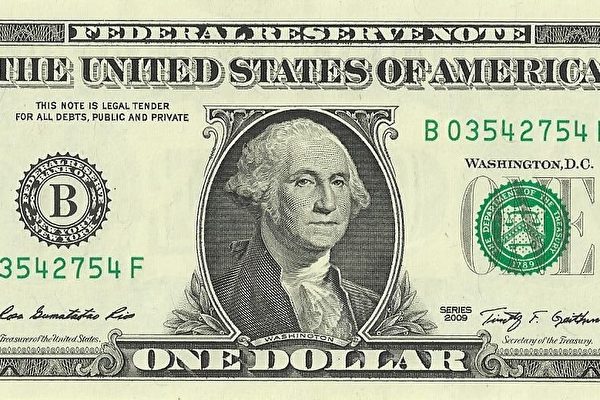If you have a $1 bill in your hand, you may want to think twice before spending it from now on. Its value could far exceed its face value and potentially bring you unexpected wealth.
According to Wealthynickel.com, there are two batches of $1 bills printed in 2014 and 2016 that contain errors caused by the US Bureau of Engraving and Printing. These bills started circulating before the errors were discovered.
Currently, American coin and currency collectors are willing to pay up to $150,000 to acquire these error $1 bills.
In November 2014, the US Bureau of Engraving and Printing issued a request to its factory in Washington D.C. to print a batch of $1 bills. In July 2016, the same factory received an identical request, leading to duplicate dollar serial numbers being printed. Normally, each bill in circulation has a unique serial number to prevent counterfeiting.
It is estimated by the Bureau of Engraving and Printing that there are 6.4 million bills with this error in circulation. Collectors are now actively searching for these two batches of $1 bills with duplicate serial numbers.
These bills could be anywhere in the world at this time.
According to WealthyNickel, these $1 bills with skyrocketing value carry the following information:
– The series date to the right of George Washington’s portrait must be “Series 2013”;
– Above the serial number on the left side of Washington’s portrait, there is a Federal Reserve Seal “B”;
– The serial number ends with an asterisk (*), ranging between B00000001* – B00250000* or B03200001* – B09600000*.
But that’s not all. If your bill has these characteristics, you now need to find another matching bill with the same serial number.
So far, only 9 pairs of bills with matching serial numbers have been found, which means millions of bills are still in circulation.
According to WealthyNickel, the prices of these pairs of bills can range from $20,000 to $150,000 depending on the circumstances.
The American Numismatic Association, a congressionally chartered nonprofit organization dedicated to the study and collection of paper money and coins, states that currency printing errors are extremely rare, making them highly valuable for collectors.
If you haven’t found one of these $1 bills mentioned above, there’s still a chance to turn modest money into a disproportionate amount of wealth.
According to U.S. Currency Auctions, uncirculated $2 bills from 1890 can fetch up to $4,500, while nearly every uncirculated bill from 1862 to 1917 is worth at least $1,000.
Collectors are willing to pay varying prices based on factors such as printing methods and locations. On July 24, 2022, a $2 bill printed in 2003 was sold at Heritage Auction for $2,400, and later resold for $4,000.
Coin collector David Sorrick told USA Today in November last year that a 1921 Buffalo nickel, in good condition or lightly circulated with the letter “S” representing San Francisco on the reverse, can be worth up to $1,500.
Furthermore, a $10,000 bill from 1934 was sold at another Heritage Auction in Dallas for $470,000. So, before spending any bills, it’s advisable to think carefully.

